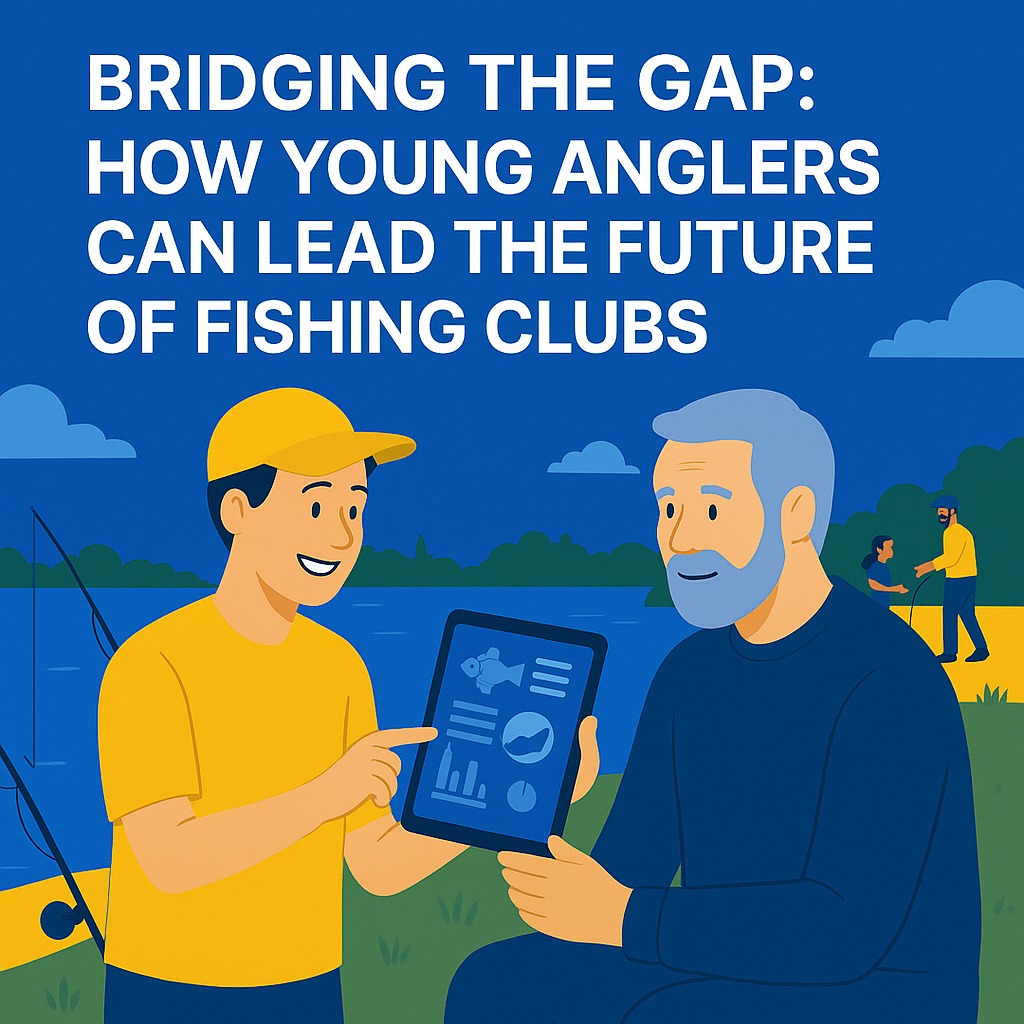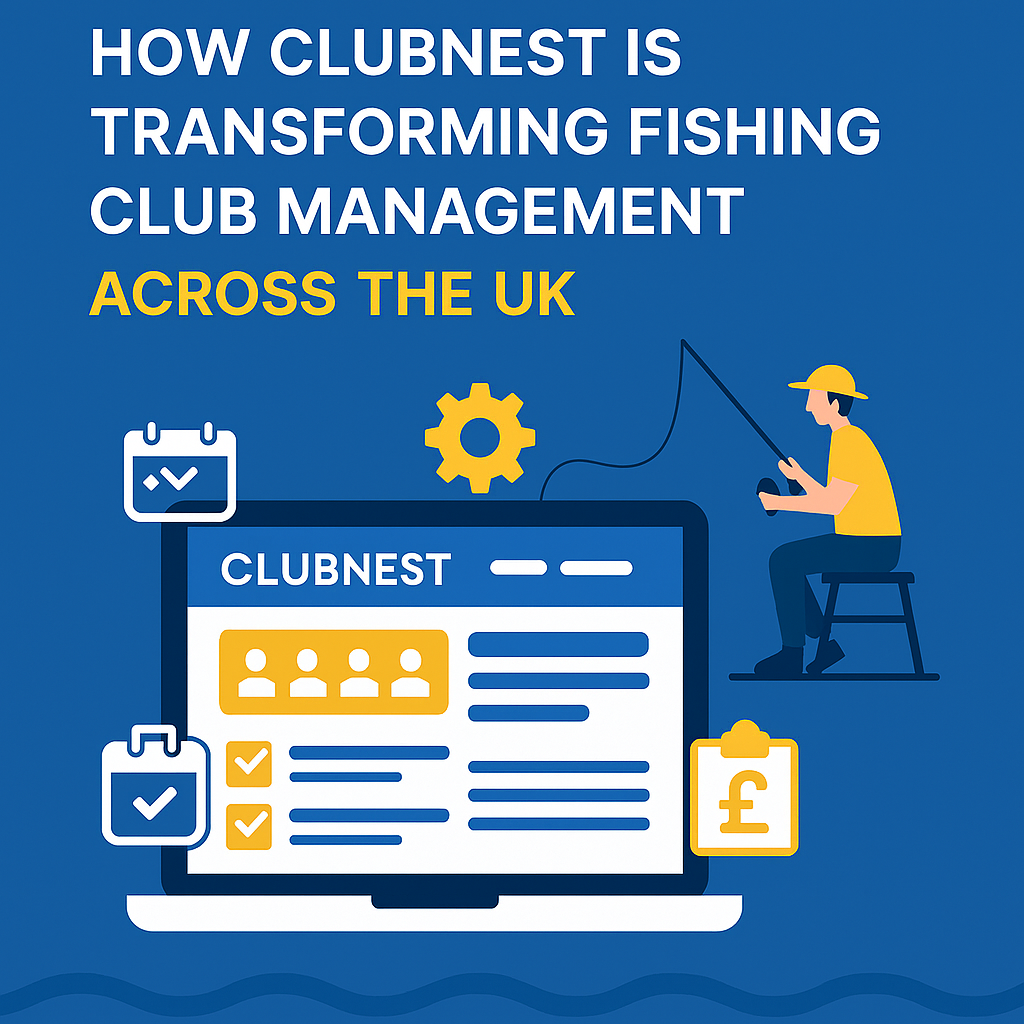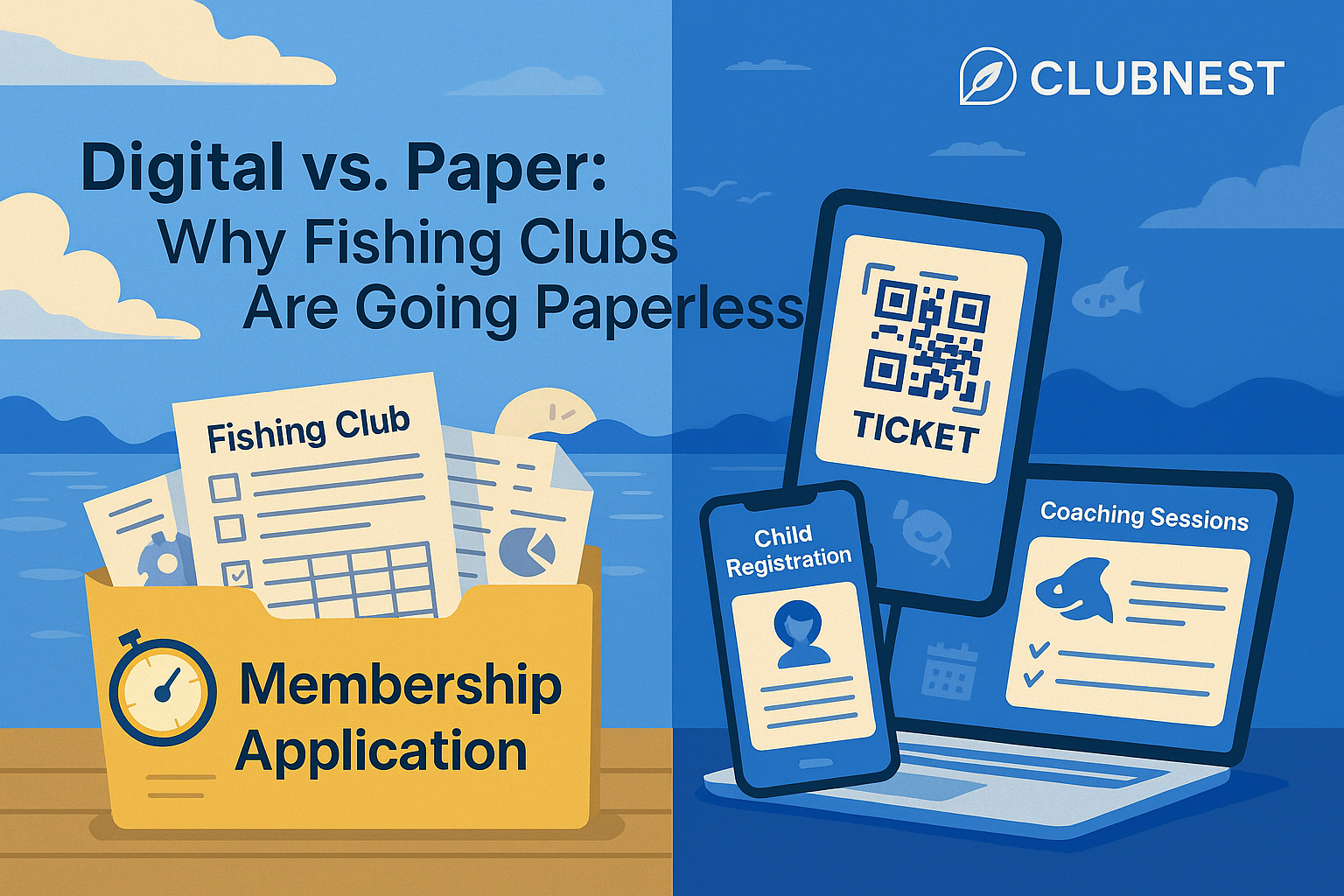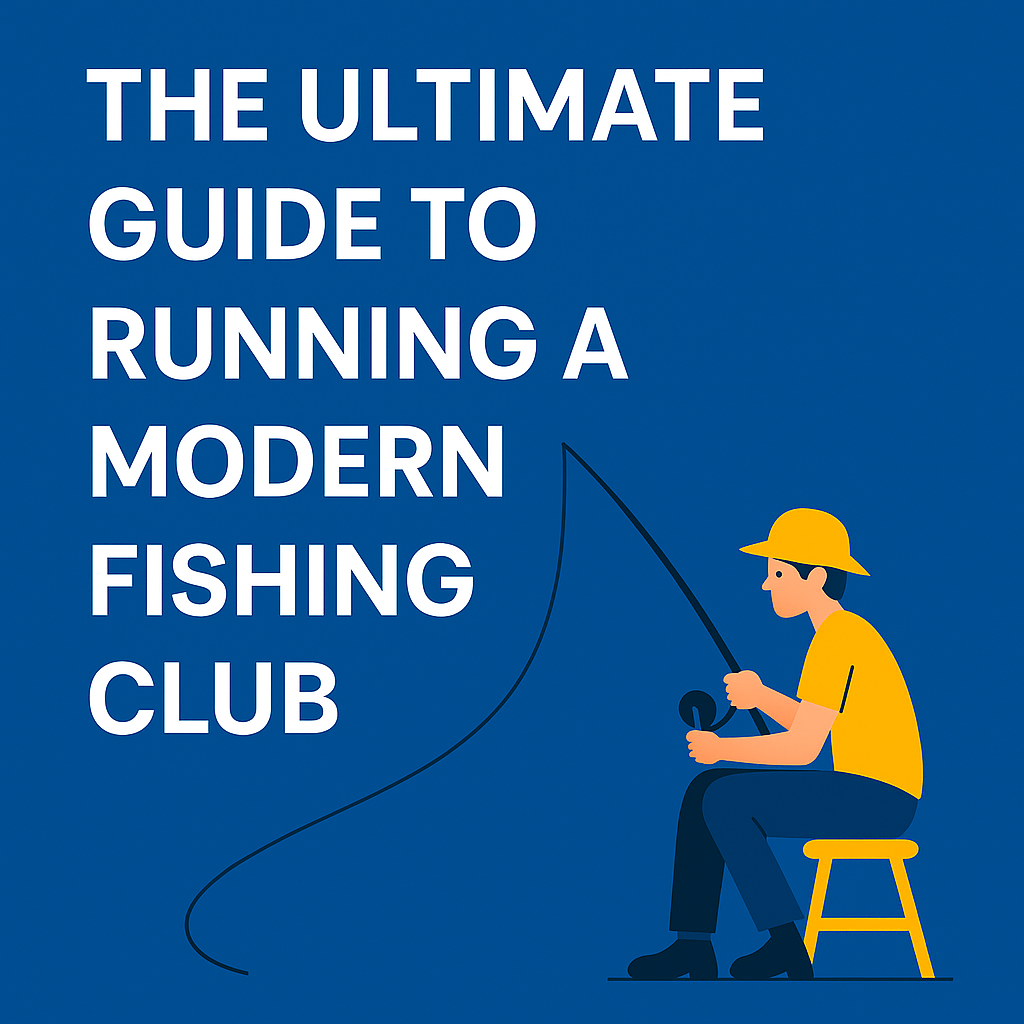Bridging the Gap: How Young Anglers Can Lead the Future of Fishing Clubs

Angling is more than just a pastime. It’s a tradition, a community, and for many across the UK, a lifelong passion. Our rivers, lakes, and canals are rich with history—stories passed down through generations, lessons learned by the water’s edge, and clubs that have kept the sport alive for decades. Yet, as angling continues to evolve, a quiet challenge has emerged—one that threatens the very future of our beloved sport.
It’s not a lack of enthusiasm. It’s not a shortage of talent. It’s a gap. A generational gap in leadership, and more urgently, in digital adaptation.
Across hundreds of angling associations and clubs, the committees running them are predominantly over the age of 60. These individuals are, without a doubt, the backbone of British angling. They’ve maintained waters, organised events, and welcomed new members for decades. But the modern demands of club management have changed dramatically. Today’s parents, juniors, and working professionals expect digital convenience—and unfortunately, too many clubs are still operating with pen, paper, and Post-It notes.
If we want to protect and grow angling in the UK, we need the younger generation—not just on the water—but in the committee room, in the clubhouse, and in the code. We need fresh leadership, new tools, and a digital-first mindset. The future of angling depends on it.
The Current Landscape: Ageing Committees and Manual Processes
Recent surveys conducted by regional angling federations and supported by anecdotal evidence from across the UK confirm what many have suspected: the average age of committee members is creeping steadily upward. In many clubs, the chairman, secretary, treasurer, and bailiff team are all aged 65 or older.
This presents a double-edged sword. On one hand, these leaders bring unparalleled experience and historical knowledge. On the other, they’re often stretched thin, reluctant to adopt unfamiliar technology, and under-resourced to handle the volume of admin that today’s clubs require.
Manual processes dominate: handwritten membership books, cash payments recorded on slips, match day rosters scribbled onto laminated sheets, and phone chains used to announce schedule changes. While these systems may feel comfortable, they’re becoming a barrier—especially for younger families who simply don’t have the time, access, or visibility to engage.
Why the Next Generation Must Step Up
The digital world is no longer optional—it’s expected. Parents of juniors often work full-time, juggle busy home lives, and rely on smartphones to manage everything from school signups to GP appointments. If registering for a fishing club requires them to drive to a tackle shop, fill out forms, and pay in cash, many simply won’t bother.
This is where the younger generation can make a profound difference.
Young anglers—many of whom are digitally native—have the skills and vision needed to transform clubs from the inside out. They understand how to build websites, set up online booking systems, run social media campaigns, and streamline communication. More importantly, they understand how people their age—and younger—discover and interact with organisations: online, quickly, and conveniently.
Taking on committee roles isn’t about replacing older volunteers—it’s about relieving the pressure, injecting new energy, and working together across generations. The future of angling needs that blend of wisdom and innovation.
Going Online Is a Growth Strategy—Not Just a Tech Upgrade
Making a club digital isn’t a vanity project. It’s a strategy for survival and growth.
Take, for example, national initiatives like the Canal & River Trust’s “Let’s Fish” campaign. By promoting beginner-friendly events online, the CRT has introduced more than 50,000 new participants to the sport since 2017. Parents are able to find local sessions through a simple search, register online in minutes, and receive automated reminders.
Similarly, the Angling Trust’s “Get Fishing” programme thrives because of its digital accessibility. With clear listings, bookable sessions, and mobile-friendly design, it removes the traditional hurdles of discovery and access.
When local clubs embrace these same tools—when their junior matches, coaching sessions, and memberships are available online—they too see a spike in engagement. Families want to fish. Juniors want to learn. But without a clear and easy way to connect, they’re missing the opportunity—and so are we.
Understanding the Digital Divide—And How to Bridge It
It’s important to acknowledge that change can be difficult. For some older committee members, technology feels intimidating. There may be a fear of getting it wrong, or worse, breaking something. That’s perfectly natural. And it’s why the younger generation must step in—not to take over, but to support, empower, and guide.
A younger club member might begin by creating a basic website. Another could help set up an online registration form for junior events. Over time, these small steps can build into a fully digital infrastructure—automating renewals, processing payments, managing attendance, and even sending out club news.
Platforms like Clubnest have been built with this very challenge in mind. They offer tools specifically designed for angling clubs—from family-friendly signups to ticketing, course bookings, and coaching dashboards. And importantly, they allow both generations to contribute: the seasoned coach managing sessions, and the digital volunteer configuring how those sessions are found and filled online.
Respecting the Foundation, Building the Future
It’s critical that this transition isn’t framed as generational conflict. Angling is a shared passion, and every volunteer—regardless of age—deserves respect and thanks. The contributions of long-standing committee members are the very reason many clubs still exist.
What we must now do is build on that foundation. That means encouraging younger anglers to get involved not just with competitions and matches, but with club governance, communication, and outreach. It means inviting them to AGMs, giving them room on subcommittees, and creating pathways for leadership that don’t take 20 years to earn.
It also means creating a culture where older members feel supported—not replaced—and where new ideas are welcomed without dismissing tradition.
What Clubs Can Do Now
So, what’s the first step? It begins with a conversation. Club chairs and secretaries should look around the room and ask: where are the next generation of leaders coming from? Who’s going to run this club in ten years?
That conversation should lead to action. Reach out to younger members. Offer training. Invite feedback. Don’t just ask for help with “the website”—ask how the club can work better for families, for juniors, and for future growth.
Set goals: move registration online within six months. Create a club email newsletter. List your coaching events on social media. These are manageable tasks—but they require commitment and trust between generations.
A Sport Worth Fighting For
Fishing isn’t just a hobby. It’s a sport that supports mental health, builds community, and teaches patience, observation, and resilience. In many areas, it provides young people with their first structured interaction with nature and mentors.
To ensure that angling remains strong for the next fifty years, we must remove the friction that holds new participants back. That friction is often paper-based, admin-heavy, and poorly communicated.
By going digital, clubs can focus less on paperwork and more on what really matters: fishing, coaching, and community.
Conclusion: The Time Is Now
Angling has always evolved. From cane poles to carbon fiber, from bait tins to bite alarms. What hasn’t changed is the spirit of the sport—the peace it offers, the friendships it fosters, and the joy of landing that first fish.
But the way we run angling must evolve too.
Younger anglers must rise—not just as participants, but as leaders. Clubs must open their doors to digital change. And together, across generations, we must ensure that our waters remain full not just of fish, but of families, juniors, and future committee members ready to keep our beloved sport alive.
Because the future of fishing doesn’t rest in the past. It rests in the hands of those willing to shape it.


